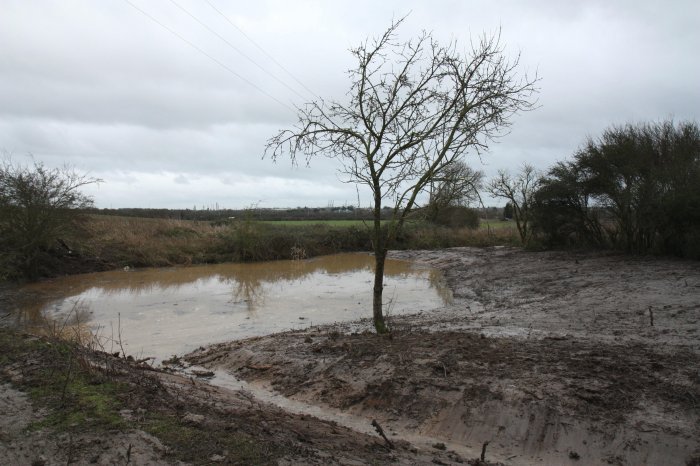A total of six ponds, located at various points along the Langdon ridge, were cleaned and partially desilted during January 2014. This was done as part of a programme which aims to revitalise these important features of the traditional landscape, enabling them to continue to support wildlife for many years to come.
All six had become increasingly clogged with silt, and in most cases were overshadowed by trees and bushes, reducing the amount of sunlight reaching them while causing increasing acidification on account of leaf-fall. In some cases there was a serious build-up of reed-mace, and one of them had a major problem of rubbish and fly-tipped debris. Two big trailer-loads of lorry tyres, and another of general rubbish, were removed.
This work was done during the depth of winter, in accordance with advice by Natural England. In this way, the short-term impact upon wildlife was minimised. It is expected that natural recovery will take place with the onset of spring, and that these ponds will become beautiful and wildlife-rich features of the Langdon landscape once again.
We are grateful to the Veolia Pitsea Marshes Trust for the necessary funding. The digger operation was carried out very skilfully by Ian Baker of Pearl’s (Land Drainage) Ltd. There was also a great deal of volunteer input, under the auspices of the Langdon Living Landscape.
We need volunteers to monitor the recovery of one or more of these ponds over the coming year or two. If you are interested, contact us.



